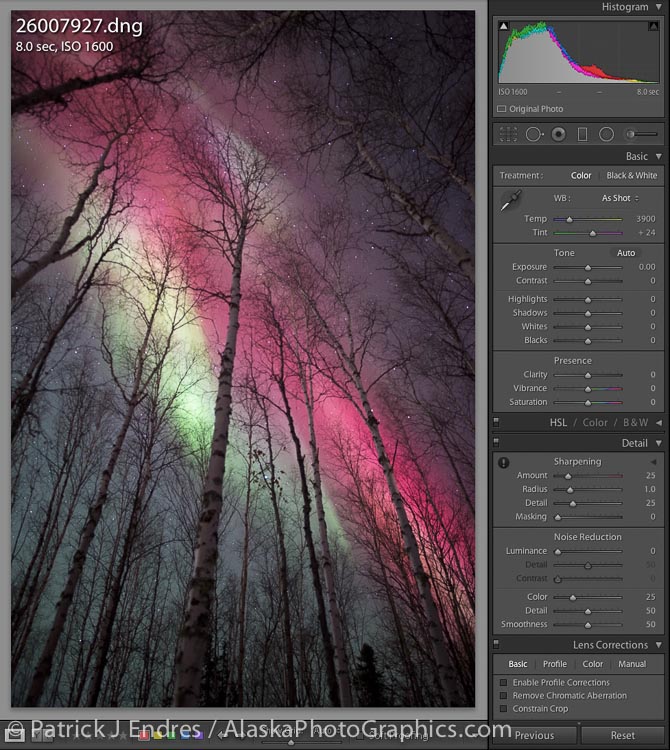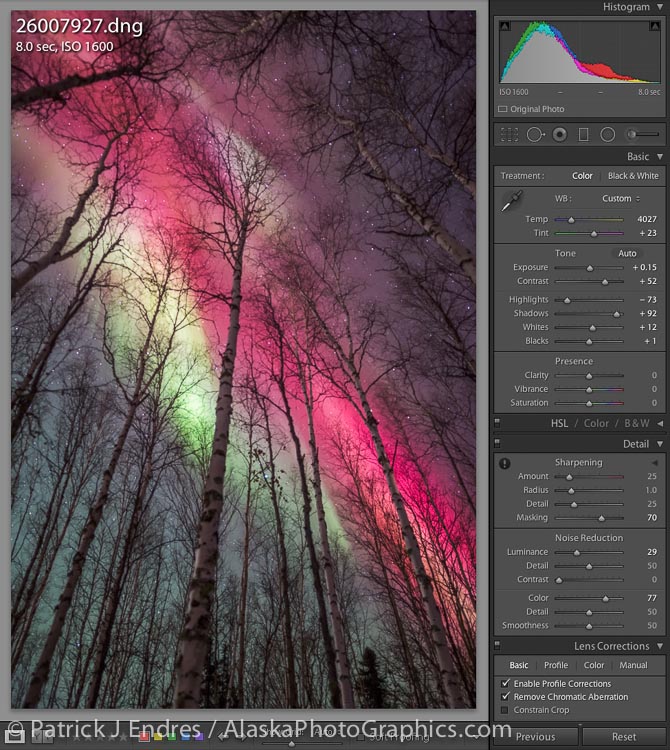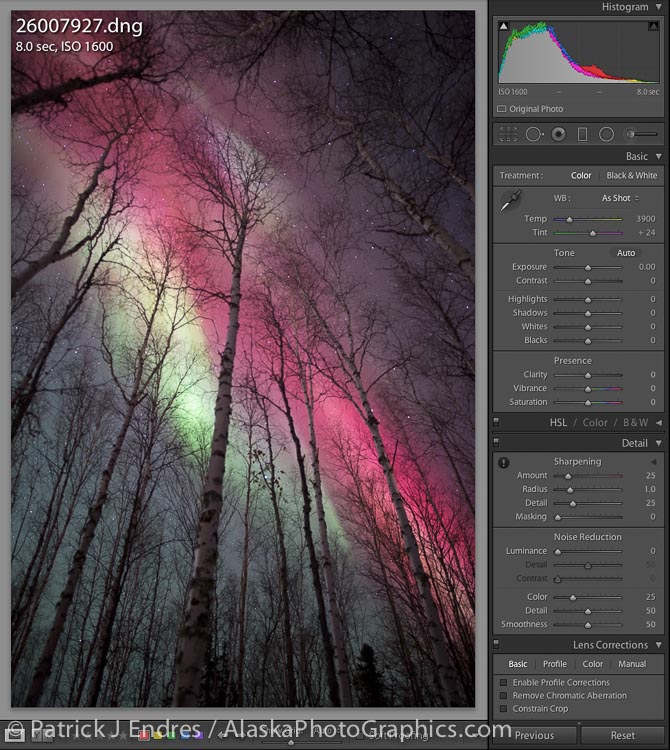I receive many questions on How to Photograph the Northern Lights–which is why I wrote an eBook on the topic. While I don’t have the time to answer all of the questions, I decided to post my response to a few questions here for the broader community.
Exposure
Q: For proper exposure of the aurora should the histogram fall in the middle of the exposure zone, or should it be in the highlight zone since this is where most of the details are, but if so am I overexposing ?
A: The histogram should properly reflect the tonal values in your composition. Because it is dark, you can expect a bulk of the histogram to be toward the left. But additionally, the aurora can bright and depending on the intensity of their display, you should see “some” representation of those brights in the histogram, i.e., to towards the right side. If you are watching a bright aurora display and your image histogram has no representation of brights values, then it is underexposed. However, you want to be extremely careful to not reach the far right wall of the histogram. As I emphasize in my eBook, do NOT overexpose. Even if you are shooting in RAW, recovery of blown out highlights with aurora photography is nearly impossible. If the shadow areas in your composition are important, and you want to maximize those, you can increase your exposure to move the histogram values from the left side more towards the middle, but always being very cautious to not blow out any highlights (see examples below).
Histogram
Q: When I take a test shot and view it , I’m actually viewing the compressed jpeg of that pic so the histogram that I review is that of the jpeg not the raw, so how do I account or compensate for that, or is there no need, because when I review the two different histograms on Lightroom 5 I see a difference?
A: Presuming you are shooting in RAW only, it should not be a concern. There may be slightly different rendering of your histogram on the camera when compared with the same image in Lightroom, but the differences are subtle. Even the highlight warning on cameras are just a warning, and not necessarily indicating a blown out sector, and they might vary slightly between cameras, and camera models. However, as I mentioned above, with aurora photography, particularly when the displays are bright, you want to be conservative and guard against overexposure.I use the histogram preview as a general guide. If you are shooting .JPEG, the in-camera picture settings, like, saturation, contrast, etc., can effect the picture and histogram more dramatically.
Focus
Q: You said in the book to find a star in the middle of the view finder and zoom in on it in live view and get the focus and exposure that way, which is great but if in that position where I get the focus its not my final composition spot and if I move the camera to where I get my composition then am I not going to lose my focus? And if so then what do I do for focus if in that position there is no star or horizon central point that I can zoom on or let alone see in the dark?
A: One point of clarification here. In the book, I suggest to find the brightest star in the sky (not the moon) and put that in the center of your viewfinder. Then execute the live-view focus process to ensure critical focus accuracy (not “focus and exposure”). Exposure will be based on your specific composition and light values which is independent and varies scene to scene. Once your camera is in focus on infinity and the focus is securely locked by taping the focus barrel, you are good to go for the rest of the night. You can recompose to any scene and make your necessary exposure adjustments and shoot away with confidence, knowing you are accurately focused on infinity and the stars will be sharp.

Histogram and initial RAW capture. The brightness values of the aurora display are accurately represented on the histogram.

Raw capture after processing in Lightroom showing a slight change in the histogram.







